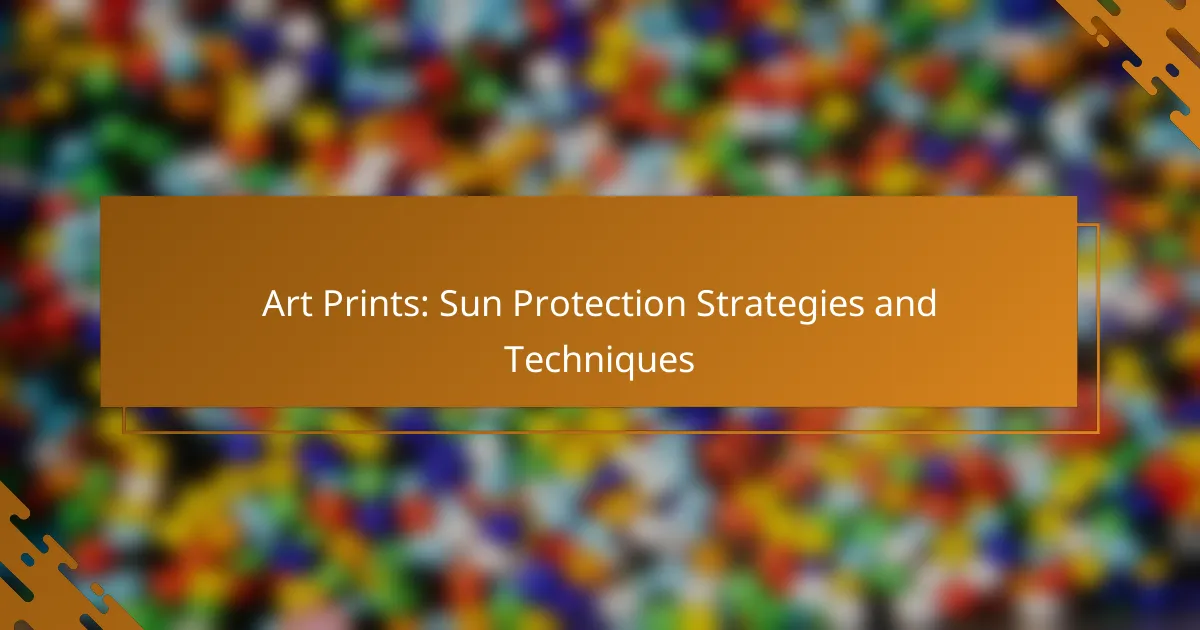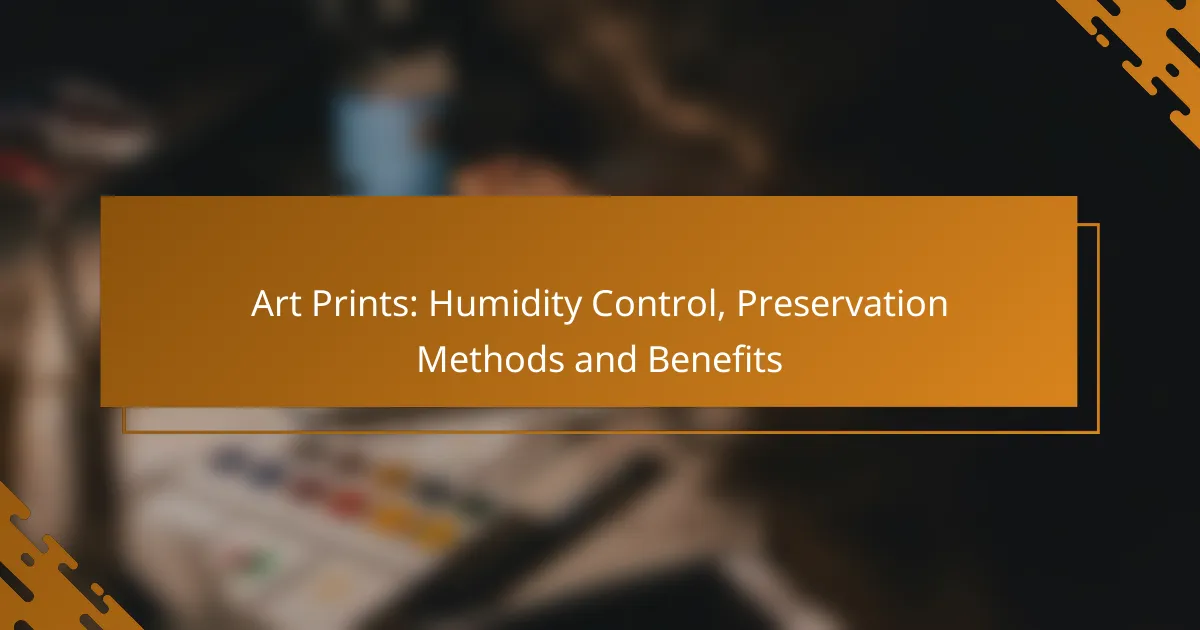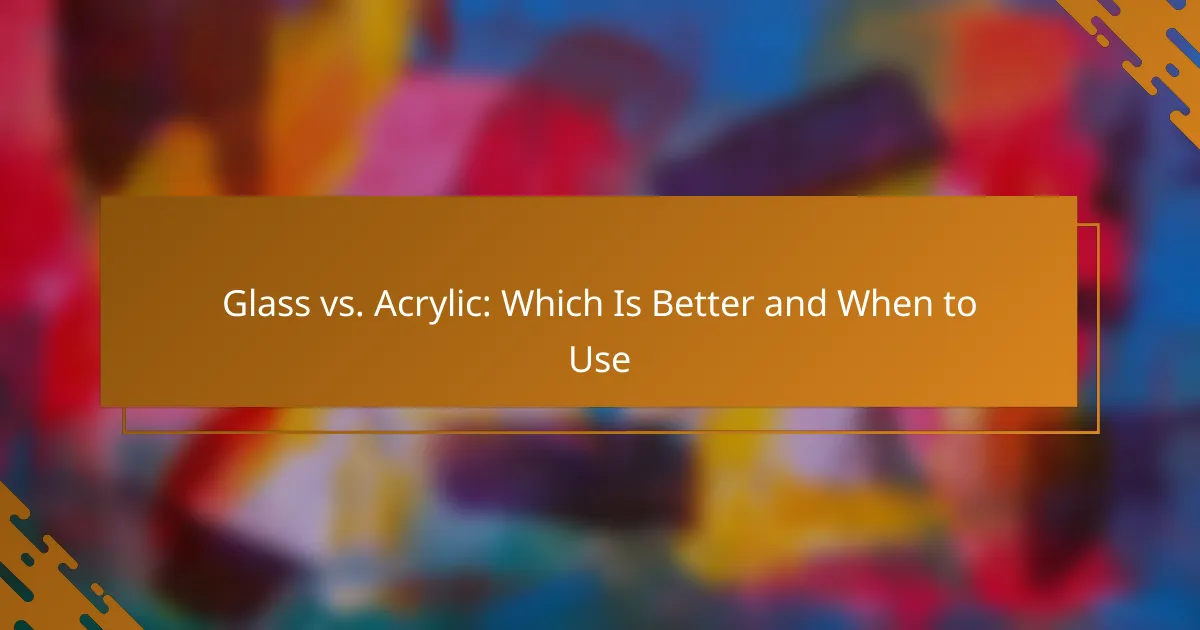Protecting art prints from sun damage is crucial for maintaining their vibrancy and integrity. Effective strategies include using UV-filtering glass, applying protective coatings, and selecting appropriate display locations. By choosing materials that block harmful UV rays, such as acid-free matting and archival inks, you can significantly extend the life of your artwork.
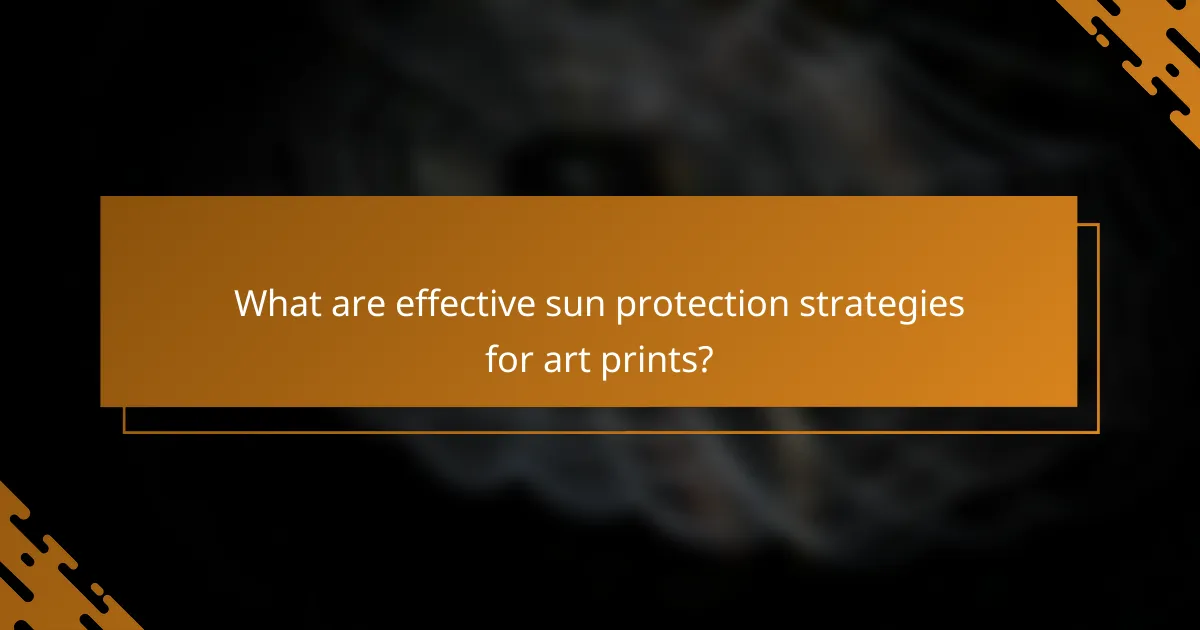
What are effective sun protection strategies for art prints?
Effective sun protection strategies for art prints include using UV-filtering glass, applying protective coatings, and carefully considering display locations. These methods help preserve the integrity and color of prints by minimizing exposure to harmful ultraviolet (UV) rays.
UV-filtering glass
UV-filtering glass is designed to block a significant percentage of ultraviolet light, which can fade and damage art prints over time. When selecting glass, look for options that filter out at least 90% of UV rays to ensure maximum protection.
Consider using museum-quality glass, which not only offers UV protection but also reduces glare, enhancing the visual experience of the artwork. While this type of glass may be more expensive, the investment can be worthwhile for valuable pieces.
Protective coatings
Applying protective coatings to art prints is another effective strategy to shield them from sun damage. These coatings can be transparent and are often made from acrylic or varnish that contains UV inhibitors.
When choosing a coating, ensure it is compatible with the print medium and does not alter the appearance of the artwork. Regularly check the condition of the coating, as it may need to be reapplied over time to maintain its protective qualities.
Display location considerations
Choosing the right display location is crucial for protecting art prints from sun damage. Avoid placing prints in direct sunlight or near windows where UV exposure is high. Instead, opt for walls that receive indirect light or use curtains and blinds to filter sunlight.
Additionally, consider the climate of the display area. High humidity and temperature fluctuations can exacerbate damage, so maintaining a stable environment will further protect your prints. Regularly assess the condition of the artwork to ensure it remains in optimal condition.
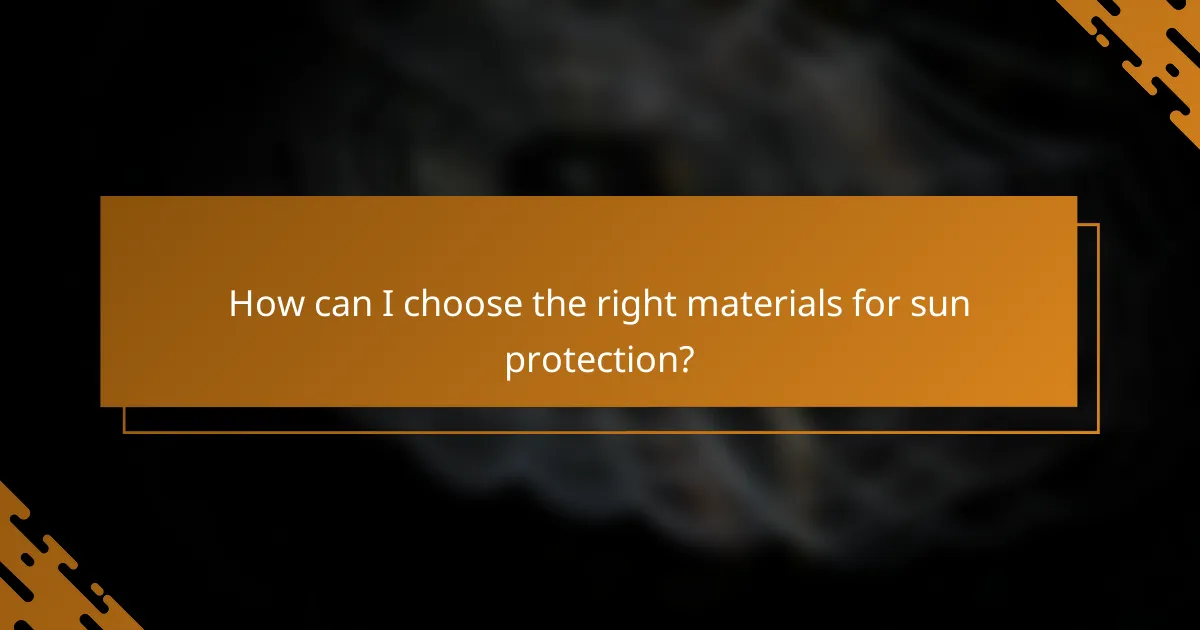
How can I choose the right materials for sun protection?
Choosing the right materials for sun protection involves selecting items that effectively block UV rays and prevent fading. Key considerations include using acid-free matting and archival inks, which help preserve the integrity of art prints over time.
Acid-free matting
Acid-free matting is crucial for protecting art prints from deterioration caused by acidity. Regular mats can release acids that damage paper and colors, leading to discoloration and brittleness. Acid-free options are made from materials that maintain a neutral pH, ensuring longevity.
When selecting acid-free matting, look for products labeled as “archival” or “museum quality.” These mats often come in various colors and textures, allowing you to complement your artwork while providing essential protection. Consider using mats that are at least 4-ply thick for added durability.
Archival inks
Archival inks are specially formulated to resist fading and discoloration, making them ideal for printing art reproductions. These inks typically contain pigments rather than dyes, which enhances their lightfastness and longevity. When shopping for prints, verify that the inks used are labeled as archival.
To ensure maximum sun protection, consider prints made with inks that have been tested for UV resistance. Many manufacturers provide information on the lightfastness ratings of their inks, often measured on a scale from 1 to 8, with higher numbers indicating better resistance to fading. Choosing prints with a rating of 7 or above is advisable for optimal durability.
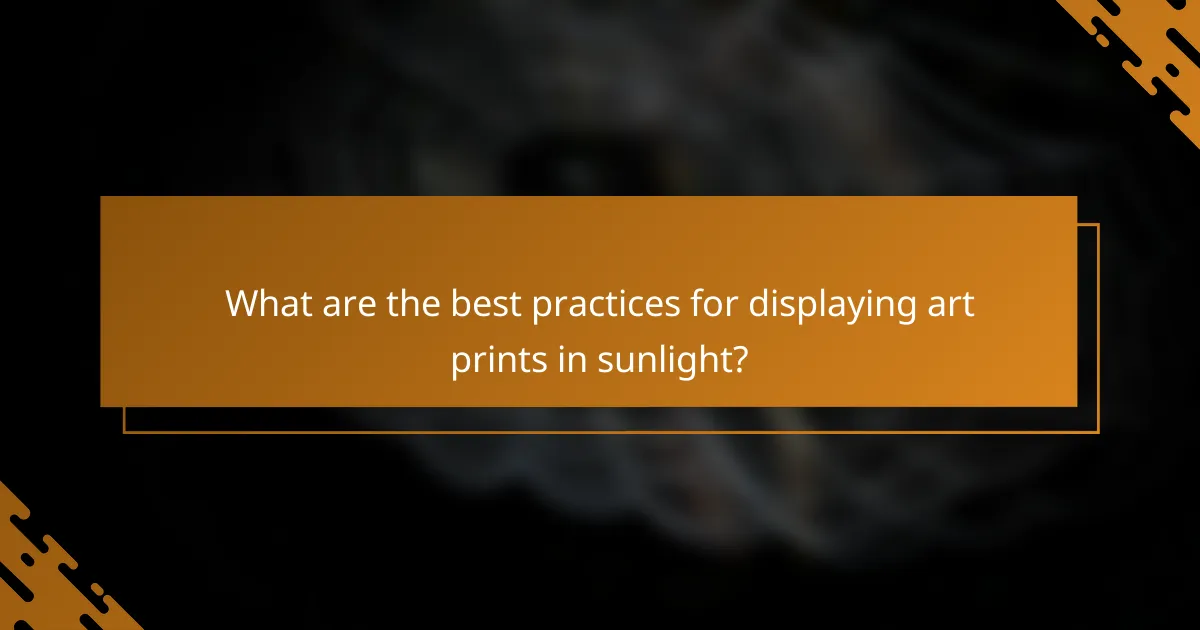
What are the best practices for displaying art prints in sunlight?
To protect art prints from sunlight, it’s essential to implement strategies that minimize exposure to harmful UV rays and heat. Using appropriate display techniques can significantly extend the life and vibrancy of your artwork.
Use of shades and blinds
Installing shades or blinds is one of the most effective ways to control sunlight exposure. Options like blackout curtains or UV-filtering shades can block harmful rays while allowing you to adjust light levels according to your needs.
Consider using materials specifically designed to reduce UV radiation, such as solar shades or window films. These can help protect your art without completely darkening the room, maintaining a balance between visibility and protection.
Rotating artwork
Regularly rotating your artwork can minimize prolonged exposure to sunlight, reducing the risk of fading and damage. By changing the displayed pieces every few months, you can ensure that no single print is subjected to direct sunlight for too long.
When rotating, consider the orientation of the artwork in relation to the sun’s path. Position prints that are more susceptible to fading in areas with less direct sunlight, and keep a schedule to remind yourself when to make the switch.

What are the risks of sun exposure on art prints?
Sun exposure poses significant risks to art prints, primarily through fading colors and degrading paper quality. Prolonged exposure to UV rays can lead to irreversible damage, affecting the aesthetic and monetary value of the artwork.
Fading of colors
Fading occurs when UV light breaks down the chemical bonds in pigments used in art prints. This process can lead to a noticeable loss of vibrancy, particularly in colors like reds and yellows, which are more susceptible to light damage.
To mitigate fading, consider displaying art prints in areas with controlled lighting. Using UV-filtering glass or acrylic can significantly reduce the amount of harmful light that reaches the artwork, helping to preserve its original colors for a longer period.
Degradation of paper
Sun exposure can cause paper to become brittle and yellowed over time, a process accelerated by heat and humidity. This degradation compromises the structural integrity of the print, making it more prone to tears and other damage.
To protect paper quality, store art prints in a cool, dry place away from direct sunlight. Using acid-free mats and frames can also help shield the paper from environmental factors that contribute to deterioration.
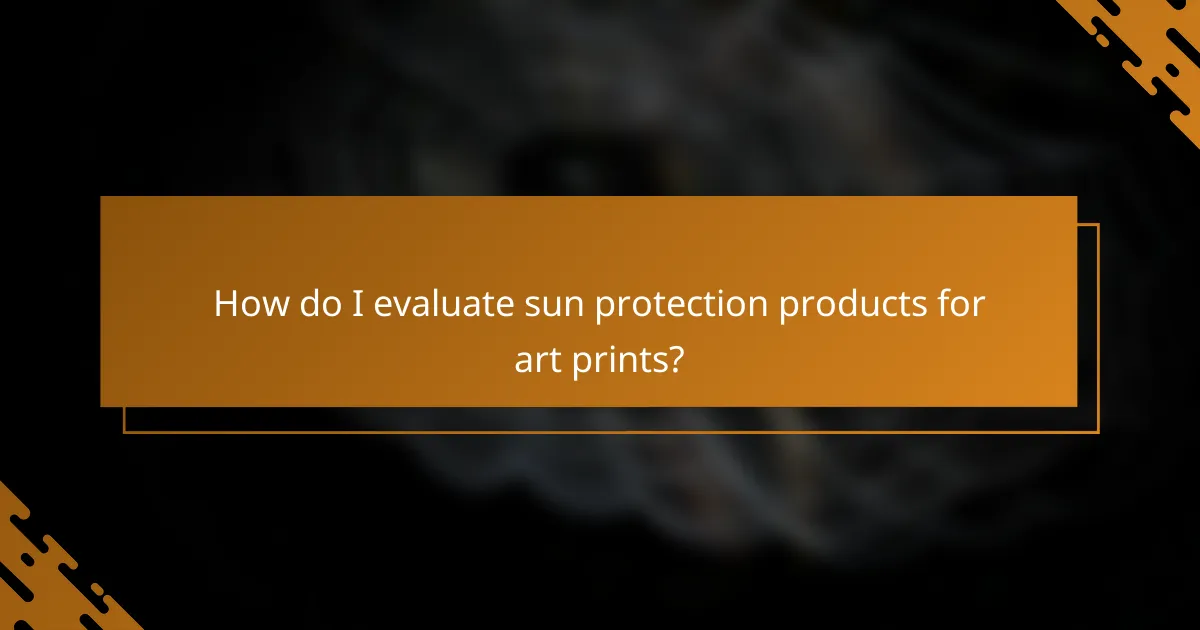
How do I evaluate sun protection products for art prints?
To evaluate sun protection products for art prints, consider their effectiveness in blocking UV rays, their durability over time, and compatibility with your specific print materials. Look for products that meet industry standards and have been tested for their protective qualities.
Comparative product reviews
When comparing sun protection products, focus on features like UV resistance, ease of application, and longevity. Products such as UV-filtering sprays, protective glass, and archival framing materials each offer different levels of protection. For instance, UV-filtering glass can block up to 99% of harmful rays, while sprays may require reapplication every few months.
Additionally, consider user reviews and expert ratings to gauge real-world performance. A product that is highly rated for its effectiveness but difficult to apply may not be the best choice for your needs.
Expert recommendations
Experts often recommend using a combination of protective measures for optimal results. For instance, framing art prints behind UV-filtering glass is a common practice, as it provides a physical barrier while blocking harmful light. In addition, applying a UV-blocking spray can enhance protection, especially for prints displayed in direct sunlight.
Always check for certifications like the American Society for Testing and Materials (ASTM) standards, which indicate that a product has been rigorously tested. This can help ensure that the sun protection products you choose will effectively preserve your art prints over time.
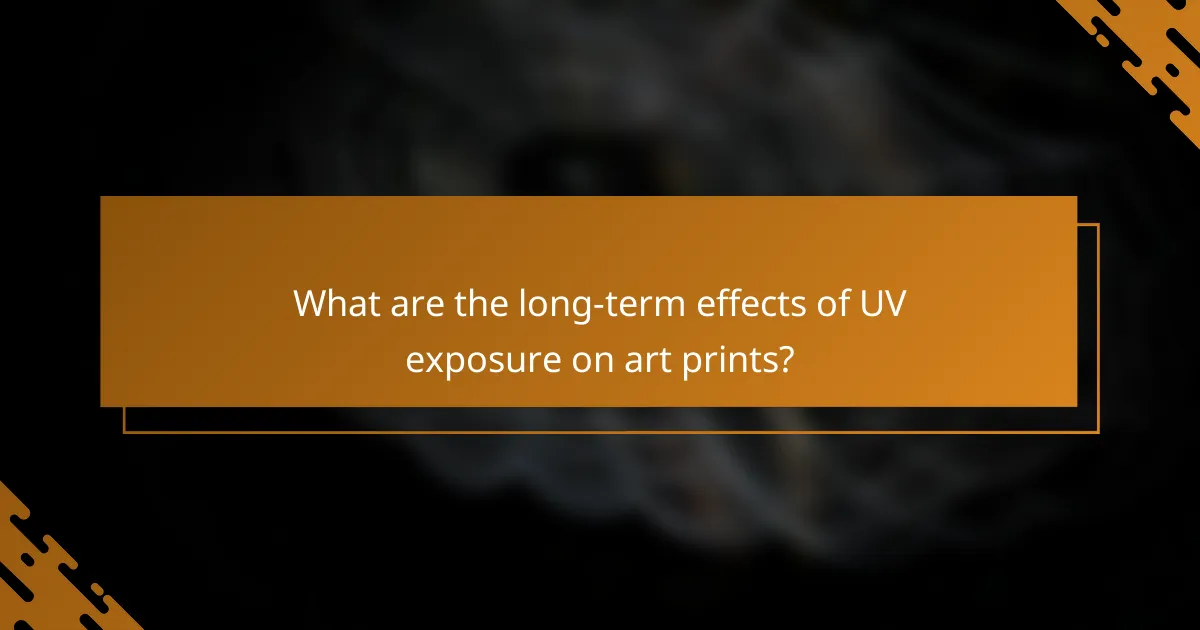
What are the long-term effects of UV exposure on art prints?
Long-term UV exposure can significantly damage art prints, leading to fading, discoloration, and deterioration of materials. These effects can compromise the aesthetic and monetary value of the artwork over time.
Changes in texture
UV radiation can alter the texture of art prints, causing surfaces to become brittle or warped. This deterioration often results from the breakdown of the materials used, such as paper or canvas, leading to cracks or peeling.
For example, prints on paper may develop a rough texture as the fibers degrade, while canvas prints might lose their tautness. Regularly inspecting prints can help identify early signs of texture changes.
Loss of value
The value of art prints can diminish significantly due to UV exposure, as collectors and buyers often seek pieces in pristine condition. Fading colors and damaged surfaces can lead to a decrease in market demand and resale price.
To preserve value, consider using UV-filtering glass or acrylic when framing art prints. Additionally, displaying artwork away from direct sunlight can help maintain its condition and worth over the years.

What emerging technologies are improving sun protection for art prints?
Emerging technologies are enhancing sun protection for art prints through advanced materials and innovative coatings. These developments focus on reducing UV exposure and prolonging the lifespan of artworks.
UV-Filtering Glass and Acrylic
UV-filtering glass and acrylic are designed to block harmful ultraviolet rays that can fade colors and damage art prints. These materials can filter out up to 99% of UV light, making them an excellent choice for framing valuable pieces.
When selecting UV-filtering options, consider the thickness and clarity of the material. Thicker glass may provide better protection, while high-quality acrylic can be lighter and shatter-resistant, ideal for larger frames.
Protective Coatings and Sprays
Protective coatings and sprays can be applied directly to art prints to create a barrier against UV light and environmental pollutants. These products often contain UV absorbers and stabilizers that help maintain color integrity over time.
When using coatings, ensure they are compatible with the print medium. Test a small area first to avoid any adverse reactions, and follow manufacturer instructions for application to achieve optimal results.
Smart Glass Technology
Smart glass technology allows for dynamic control of light exposure, adjusting tint levels based on sunlight intensity. This innovation can significantly reduce UV damage by automatically adapting to environmental changes.
While smart glass can be more expensive than traditional options, its energy efficiency and protective benefits make it a worthwhile investment for galleries and collectors who want to preserve their art over the long term.
